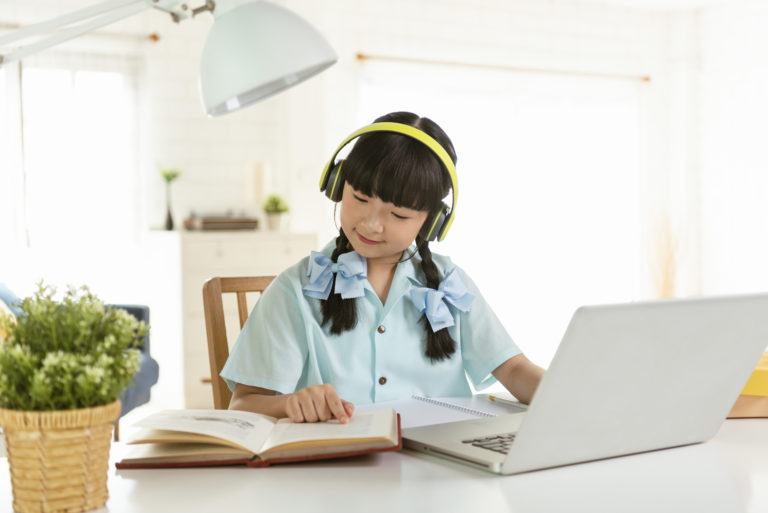Ultimate Guide: How to Organize Your Homeschool Room
Hey there, fellow homeschooling champs! 🌟
Ready to transform your homeschool room into the organized haven of learning dreams? Buckle up because we’ve got the ultimate guide coming your way! 🚀
As a fellow homeschooling parent, I get it—we need our learning space to be on point.
Let’s dive into the nitty-gritty of making your homeschool room the stuff of legend.
Grab your checklist and let’s get started on the journey to a well-organized and inspiring homeschooling space! 🌈📚✨
Key Takeaways:
- Implementing effective organization strategies in your homeschool room creates a conducive learning environment.
- Maximize space by repurposing furniture, creating a family command center, and using designated shelves and bookshelves.
- Organize digital resources by creating folders, using password managers, and considering the pros and cons of digital curriculum.
- Stay on top of homeschool assignments with printable or digital homeschool planners and workboxes.
- Keep homeschool records for legal compliance and future transcripts, familiarizing yourself with your state’s requirements.
Maximizing Space in Your Homeschool Room
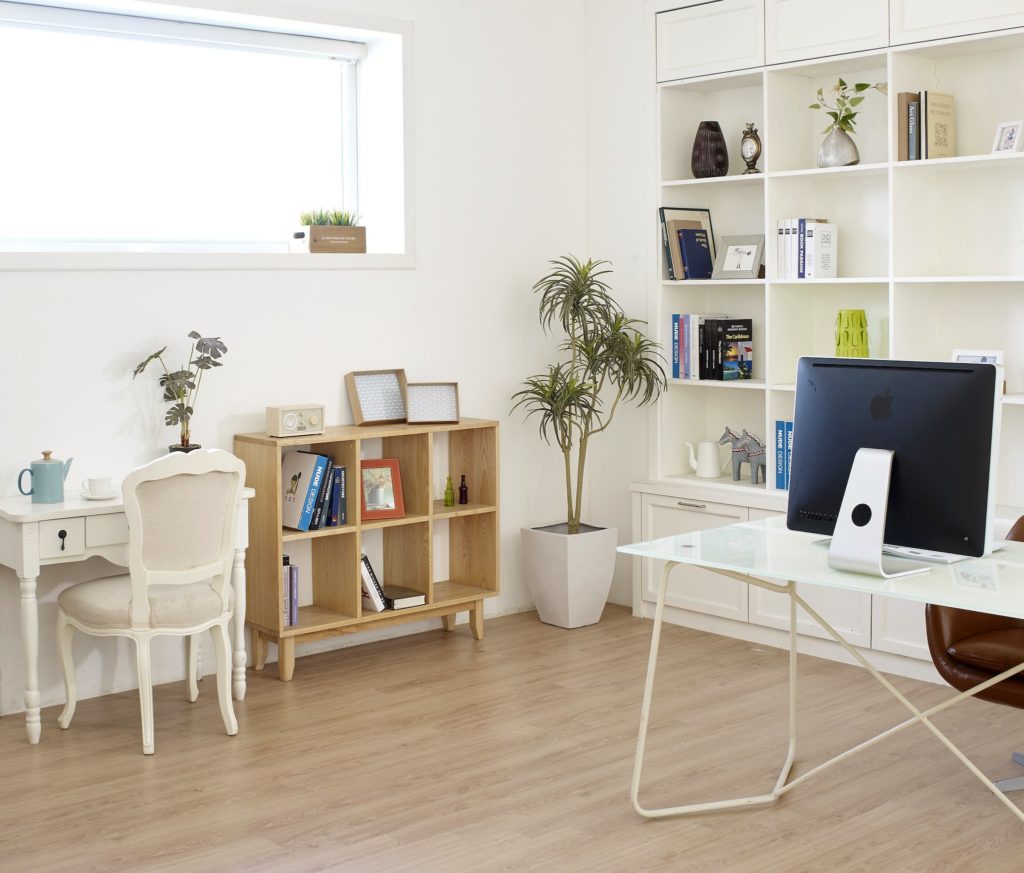
When it comes to homeschooling, creating a functional and organized learning space is essential.
One of the key aspects of efficient homeschool room organization is maximizing the available space.
By utilizing smart strategies, you can make the most of your homeschool room and create an environment that is conducive to learning.
Multipurpose Furniture and Clever Storage Solutions
Repurposing furniture is a great way to maximize space in your homeschool room.
Consider using entertainment centers or armoires as storage units for books, supplies, and curriculum materials.
These pieces of furniture can provide ample storage while keeping the room clutter-free and organized.
Utilizing closets in your homeschool room is another effective way to create more space.
Install shelves or use hanging organizers in each child’s closet to keep their materials separate and easily accessible.
This not only frees up space in the room but also allows for a more personalized and organized approach to homeschooling.
Creating a Family Command Center
A family command center can be a game-changer when it comes to homeschool organization.
Set up a wall calendar where you can jot down important dates, activities, and assignments.
Use sticky notes or a whiteboard to keep track of daily to-do lists or reminders.
This central hub will help you stay organized and ensure that everyone in the family is on the same page.
By incorporating these strategies, you can effectively maximize the space in your homeschool room and create a functional and organized learning environment.
From repurposing furniture to creating a family command center, these tips will help you make the most of your homeschool space.
Organizing Digital Resources for Homeschooling

In today’s digital age, incorporating online tools and digital curriculum has become increasingly common in homeschooling.
However, effectively organizing these digital resources is essential to ensure a smooth and efficient homeschooling experience.
By implementing the right strategies, you can streamline your digital curriculum and manage passwords with ease.
Creating Folders and Bookmarks
One effective way to organize digital resources is by creating folders on your desktop or in your file management system.
This allows you to categorize and store curriculum emails, URLs, and downloaded materials in a systematic manner.
You can create folders for each subject or topic, making it easier to locate and access specific resources when needed.
Another useful tip is to utilize the bookmarks toolbar on your web browser.
This allows you to bookmark frequently visited curriculum platforms, educational websites, and other online resources.
By organizing your bookmarks into folders, you can quickly access the resources you need without wasting time searching through countless tabs and bookmarks.
Managing Passwords
With the growing number of online platforms and tools used in homeschooling, it’s important to have a system for managing passwords.
One option is to use a password manager, which securely stores all your passwords in one place.
Password managers not only save you the hassle of remembering multiple passwords but also provide an added layer of security for your online accounts.
If you prefer not to use a password manager, you can create a document or spreadsheet to record your passwords.
Make sure to keep this document secure by using encryption or storing it in a password-protected folder.
Additionally, consider using unique and strong passwords for each online platform to further enhance security.
By implementing these strategies for organizing digital resources and managing passwords, you can create a more efficient and stress-free homeschooling experience.
With everything neatly organized and easily accessible, you’ll be able to focus more on teaching and learning, rather than searching for digital materials.
| Benefits of Organizing Digital Resources | Tips for Managing Passwords |
|---|---|
| Efficient access to online curriculum materialsReduced time spent searching for resourcesEasy categorization and organization of digital materials | Consider using a password managerCreate a secure document or spreadsheet to record passwordsUse unique and strong passwords for each online platform |
Organizing Homeschool Assignments

When it comes to homeschooling, keeping assignments organized is vital for a smooth and successful learning experience.
Having a clear system in place helps both parents and students stay on top of their tasks and ensures that nothing falls through the cracks.
Here are some practical tips for organizing homeschool assignments:
1. Utilize a Homeschool Planner
A homeschool planner is a valuable tool for staying organized.
Whether you prefer a printable or digital version, a planner helps you keep track of lessons, assignments, and progress.
Use it to schedule daily tasks, record completed work, and plan future activities.
With a homeschool planner, you can easily visualize your progress and make adjustments as needed.
2. Implement Homeschool Workboxes
Homeschool workboxes are a fantastic organizational solution, especially for families with multiple children.
Each child has their own designated box or drawer where they can find all the materials and resources needed for each subject or assignment.
This saves time and prevents confusion, allowing students to focus on their work without searching for the necessary materials.
3. Create a Daily Assignment Checklist
A daily assignment checklist provides a clear overview of the tasks that need to be completed each day.
List the assignments or subjects that need to be finished, and students can check them off as they are completed.
This visual representation of progress helps students stay motivated and gives them a sense of accomplishment as they see their checkmarks grow throughout the day.
| Assignment | Completed |
|---|---|
| Math | ✓ |
| Science | ✓ |
| History | |
| Language Arts |
By implementing these organizational strategies, you can streamline your homeschool assignments and ensure a productive learning environment.
Find the methods that work best for your family and adapt them as needed. Remember, an organized homeschool is a successful homeschool!
Keeping Homeschool Records

When homeschooling, it is important to maintain accurate and organized records for legal compliance and future needs.
Each state has specific requirements for homeschool record-keeping, so it is essential to familiarize yourself with these guidelines.
Some common record-keeping requirements may include notifications, assessments, portfolios, attendance records, or documentation of completed hours.
To ensure compliance, it is crucial to have an organized system in place to store and track your homeschool records.
This system should include a designated area or file for each child’s records, making it easy to access and update as needed.
Consider using folders or binders labeled with each child’s name and the respective school year for efficient record-keeping.
In addition to legal compliance, keeping homeschool records can also be beneficial for future transitions.
If your child plans to enroll in a traditional school or apply for college, having organized records will streamline the process.
You can create high school transcripts that showcase your child’s educational achievements, including coursework, grades, and extracurricular activities.
Sample Record-Keeping Table
| Record Type | Description |
|---|---|
| Attendance Records | Documenting the number of days your child participates in homeschooling activities. |
| Portfolio | Collecting samples of your child’s work to demonstrate progress and achievement. |
| Assessments | Recording any assessments or evaluations conducted throughout the school year. |
| Curriculum Used | Keeping track of the curriculum materials and resources used for each subject. |
| Extracurricular Activities | Documenting any extracurricular activities, clubs, or community involvement your child participates in. |
By adhering to state requirements and maintaining thorough homeschool records, you can ensure both legal compliance and a smooth transition for your child’s future educational endeavors.
Homeschooling in Small Spaces
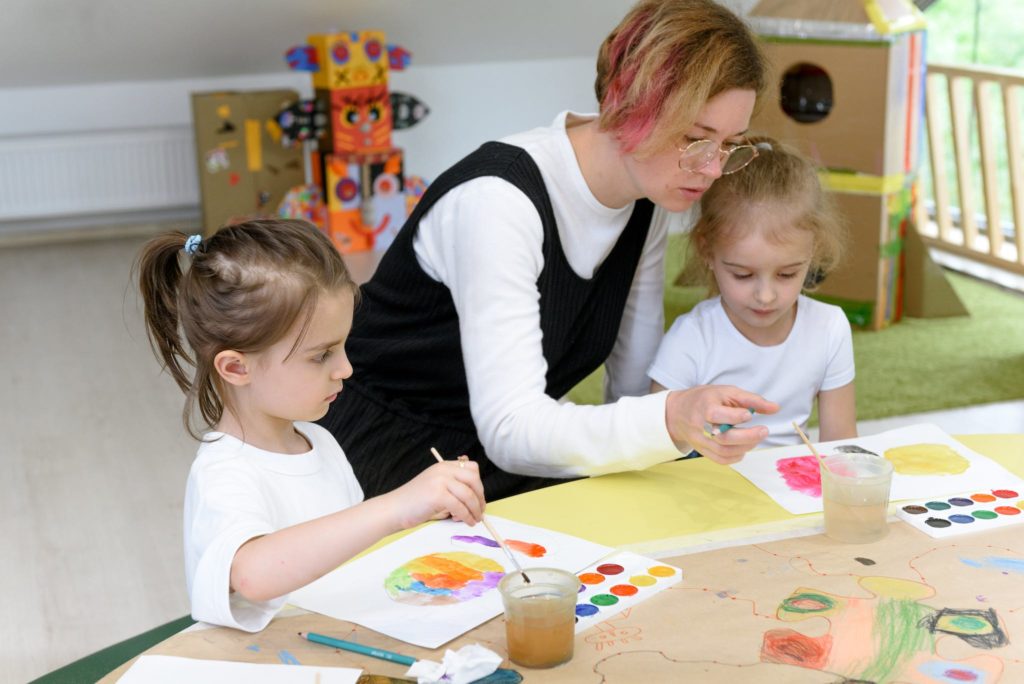
When it comes to homeschooling in small spaces, creativity and organization are key. One popular option is to utilize the kitchen table as the primary learning area.
By designating a specific storage space for homeschool supplies, such as a rolling cart or storage bins, you can keep materials organized and easily accessible.
Additionally, repurposing furniture and creating functional spaces in a small room or corner of a larger room can provide an effective homeschooling area.
To optimize space in small homeschooling areas, consider choosing furniture that serves multiple purposes.
For example, a desk with built-in storage can provide a workspace while also offering a place to keep materials organized.
You can also utilize vertical space by installing shelves or using wall-mounted storage solutions.
By making the most of every available inch, you can create a functional and organized homeschooling space in even the smallest of areas.
Table: Ideas for Homeschool Organization in Small Spaces
| Idea | Description |
|---|---|
| Utilize kitchen table | Use the kitchen table as the primary learning area. |
| Designated storage space | Create a specific storage space for homeschool supplies, such as a rolling cart or storage bins. |
| Repurpose furniture | Repurpose furniture and create functional spaces in small rooms or corners. |
| Choose multi-purpose furniture | Choose furniture that serves multiple purposes, such as a desk with built-in storage. |
| Utilize vertical space | Install shelves or use wall-mounted storage solutions to make the most of available space. |
Homeschooling in small spaces may require some extra creativity and organization, but with the right strategies, it can be done successfully.
By maximizing space, utilizing multi-purpose furniture, and implementing effective storage solutions, you can create a functional and organized homeschooling area that meets the needs of your family.
Designing Your Homeschool Room
Designing your homeschool room is an exciting opportunity to create an inviting and inspiring learning environment for your children.
By carefully considering the aesthetics, functionality, and personalization of the space, you can transform it into a place where your children feel motivated and eager to learn.
When designing your homeschool room, think about incorporating elements that enhance organization and creativity.
Consider adding functional items like chalkboards, whiteboards, or bulletin boards to keep track of schedules, assignments, and important information.
These visual aids not only serve as practical tools but also add a touch of creativity to the room.
Personalization is key to creating an inviting homeschool space. Hang artwork created by your children or display their projects to cultivate a sense of pride and ownership.
Adding plants or natural elements can also create a calming and soothing atmosphere, making it easier for your children to focus and engage in their studies.
Table: Design Ideas for Your Homeschool Room
| Design Element | Description |
|---|---|
| Natural Lighting | Maximize natural light by positioning desks or workspaces near windows. Natural light promotes better focus and productivity. |
| Color Palette | Choose a color palette that promotes concentration and relaxation. Soft blues, greens, and neutrals can create a calming environment. |
| Flexible Seating | Consider incorporating flexible seating options, such as bean bags or floor cushions, for a comfortable and versatile learning space. |
| Organization Systems | Implement storage solutions like bookshelves, cubbies, or bins to keep materials organized and easily accessible. |
By focusing on design elements that encourage organization, personalization, and comfort, you can create a homeschool room that promotes a positive and productive learning experience for your children.
Homeschooling from the Kitchen Table
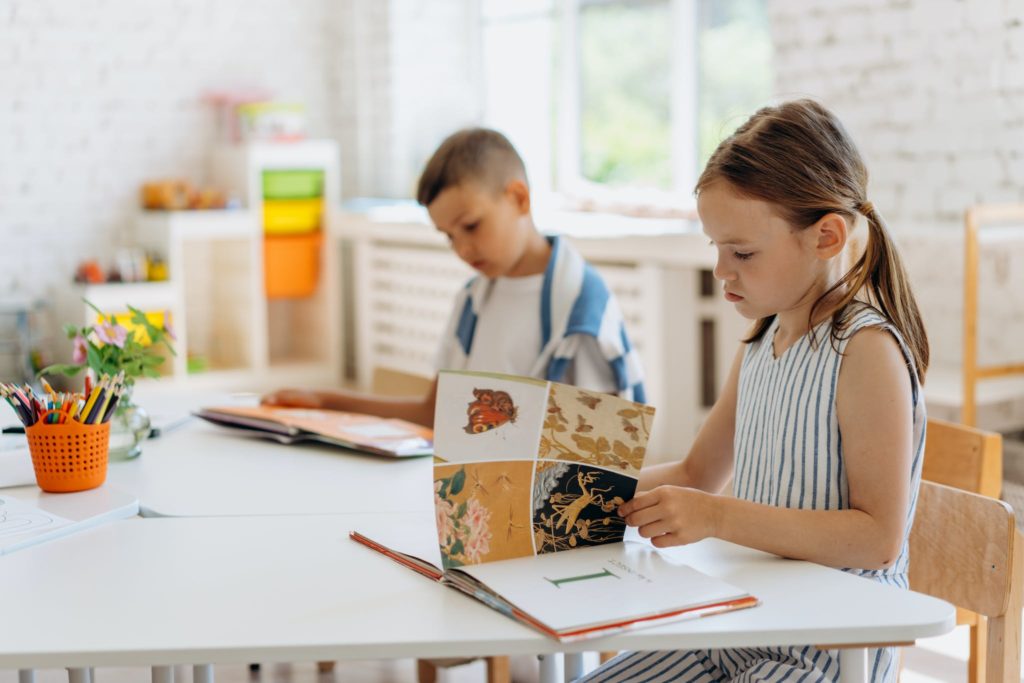
When it comes to homeschooling, many families find that their kitchen table becomes the central hub for learning.
It provides a convenient and versatile space where children can work on their assignments and engage in educational activities.
However, to ensure a smooth and productive homeschooling experience, it’s important to have a designated storage space for homeschool supplies.
Designated Storage Space for Homeschooling Materials
Having a designated storage space for homeschooling materials helps keep everything organized and easily accessible.
Consider using rolling carts or storage bins to store and categorize supplies such as books, notebooks, pens, and art materials.
Assign specific areas for each child’s books and supplies to ensure a seamless transition between subjects.
By implementing a system that works for your family’s needs, you can maintain order and create an efficient learning environment.
Organizing Homeschool Supplies
Organizing homeschool supplies is essential to prevent clutter and promote a focused learning environment.
Utilize organizers such as plastic bins, drawers, or caddies to store smaller items like pencils, erasers, and calculators. Label each container to easily identify its contents.
Additionally, consider creating a designated area for books and resources, whether it’s a bookshelf or wall-mounted storage solutions.
By keeping supplies organized and easily accessible, you can save time and enhance the overall homeschooling experience.
Creating a Productive Homeschooling Experience
Homeschooling from the kitchen table can be a rewarding experience for both parents and children.
By having a designated storage space for homeschool supplies and keeping them organized, you can create a productive learning environment.
Encourage your children to clean up after each session, ensuring that materials are returned to their designated spots.
By maintaining an organized and clutter-free space, you can set the stage for a successful homeschooling experience.
| Benefits of Designated Storage Space | Tips for Organizing Homeschool Supplies |
|---|---|
| Easy accessibilityPromotes independenceReduces clutter | Utilize organizersLabel containersCreate a book/resource area |
Setting Up a Designated Homeschool Room

Creating a designated homeschool room is a great way to establish a dedicated learning space for your children.
By setting up a designated area, you can create an organized and focused environment that promotes effective learning. Here are some ideas to help you get started:
Choosing the Right Space
First, consider the available space in your home and select a room that can be dedicated solely to homeschooling.
It should be a quiet and well-lit area that allows for minimal distractions. If you don’t have an entire room to spare, you can also transform a corner of a larger room or utilize a loft or attic space.
Selecting the Right Furniture
Choose furniture that is functional and ergonomic. Provide each child with a desk or table and a comfortable chair. Consider adjustable-height desks to accommodate growing children.
Additionally, invest in bookshelves or storage units to keep homeschool curriculum and supplies organized and easily accessible.
Incorporating a chalkboard or dry-erase board can also be beneficial for teaching and learning.
Organizing Your Supplies
Having a designated storage system for homeschool supplies is essential to maintain an organized space. Use bins, baskets, or shelving units to store textbooks, workbooks, art supplies, and other materials.
Label each storage container to make it easy for both you and your children to find what you need. Creating a schedule or checklist for regular tidying up can help ensure that everything stays in its proper place.
| Homeschool Furniture Ideas | Description |
|---|---|
| Adjustable-Height Desks | Allows for easy customization to accommodate growing children. |
| Bookshelves and Storage Units | Provides storage space for homeschool curriculum and supplies. |
| Chalkboard or Dry-Erase Board | Facilitates teaching and learning activities. |
| Bins, Baskets, and Shelving Units | Helps keep homeschool supplies organized and easily accessible. |
Setting up a designated homeschool room requires careful planning and organization.
By choosing the right space, selecting appropriate furniture, and organizing your supplies, you can create an environment that promotes effective learning and ensures a smooth homeschooling experience.
Organizing Homeschool Curriculum Books
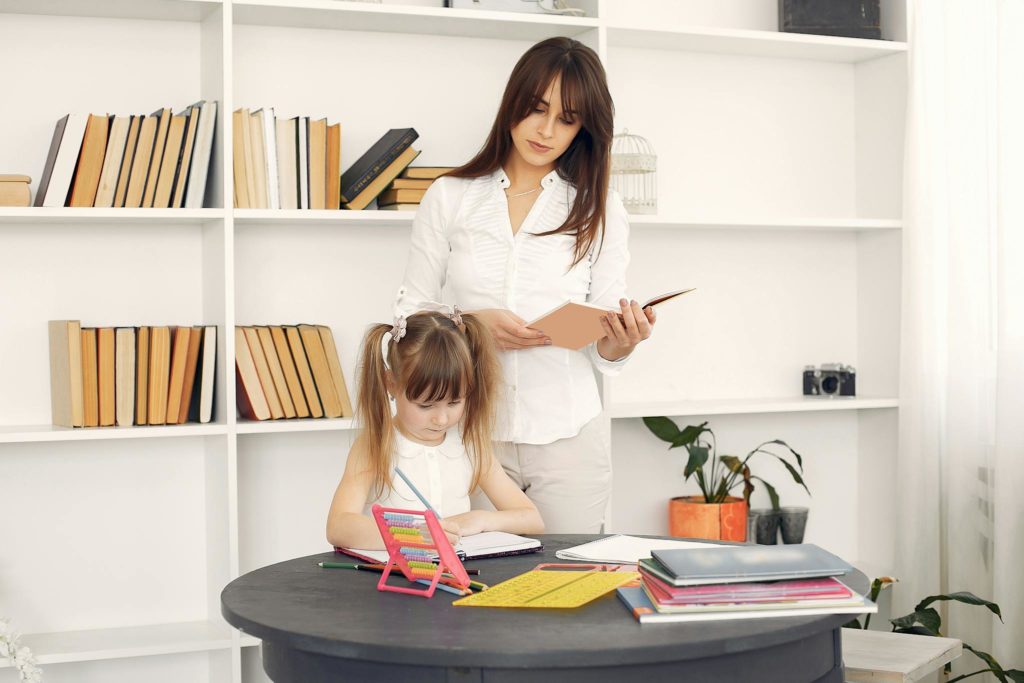
When it comes to homeschooling, organizing curriculum books is essential to ensure easy access and effective use of materials.
Having a clear system in place not only saves time but also reduces clutter and promotes a more efficient learning environment.
Here are some practical strategies and storage solutions for organizing homeschool curriculum books.
1. Utilize Bookshelves
Bookshelves are a popular and efficient way to store and display homeschool curriculum books.
Consider purchasing or building sturdy bookshelves that can accommodate your collection. To keep books organized, use labels or designate separate sections for each child.
This not only makes it easier to find specific books but also encourages children to take ownership of their learning materials.
2. Wire Wall Baskets and Photo Ledge Shelves
For a visually appealing way to showcase books while maximizing space, consider using wire wall baskets or photo ledge shelves.
These storage solutions not only provide a designated spot for curriculum books but also add a stylish touch to your homeschool area.
You can group books by subject or grade level, making it easier for both parents and children to locate the resources they need.
3. Create a Curriculum Inventory List
To keep track of your curriculum books and ensure nothing gets lost or misplaced, create a curriculum inventory list.
This list should include the title, author, and edition of each book, as well as the grade level or subject it corresponds to.
Having an inventory list not only helps you stay organized but also allows you to easily identify any missing or outdated materials that need to be replaced.
By implementing these organizing strategies, you can create a well-structured and efficient system for your homeschool curriculum books.
Remember, finding a method that works best for your family’s needs is key to maintaining an organized and effective homeschooling experience.
Homeschool Desk Ideas

When it comes to homeschooling, having individual workspaces for each child can greatly enhance focus and productivity.
Here are some homeschool desk ideas to consider:
1. Traditional Student Desks with Book Storage
Traditional student desks with built-in book storage provide designated areas for each child to work and keep their materials organized.
These desks often have drawers or shelves where books, notebooks, and supplies can be conveniently stored.
2. Wooden Desks with Side Storage
Wooden desks with side storage offer a classic and functional option for homeschool workspaces.
The side storage compartments can be used to store textbooks, folders, and other essential supplies, keeping them within reach while minimizing clutter.
3. Wall-Mounted Floating Desks
If you have limited space, wall-mounted floating desks can be a great solution. These desks save floor space and provide a clean and minimalist look.
They are perfect for creating individual workspaces in small rooms or shared areas.
Ultimately, the best homeschool desk solution depends on the specific needs of each child and the available space.
Consider the size of the desk, storage options, and the overall design to ensure a comfortable and organized learning environment.
| Homeschool Desk Ideas | Features |
|---|---|
| Traditional Student Desks with Book Storage | – Built-in book storage – Dedicated work area for each child |
| Wooden Desks with Side Storage | – Classic and functional design – Side storage compartments for supplies |
| Wall-Mounted Floating Desks | – Space-saving solution – Clean and minimalist look |
Having individual workspaces for homeschooling allows each child to have their own designated area for focused learning.
Whether you opt for traditional student desks, wooden desks with side storage, or wall-mounted floating desks, creating a comfortable and organized homeschool desk is key to a productive learning experience.
Recommended Resources for a Homeschool Area
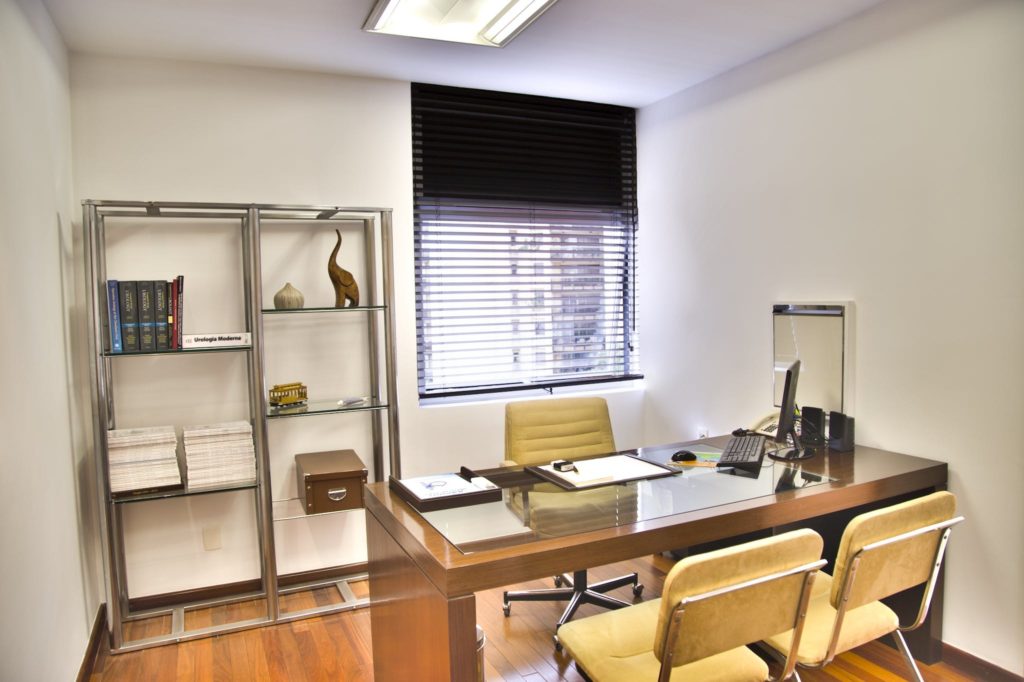
Creating a functional and organized homeschool area requires the right resources and furniture.
Here are some recommended items to consider:
Storage Solutions
- Rolling Carts: These versatile carts provide convenient storage options for homeschool supplies and can be easily moved around the room.
- Storage Bins: Use stackable storage bins with labels to keep materials organized and easily accessible.
- Bookshelves: Invest in sturdy bookshelves to store and display your homeschool curriculum books. Consider customizable options to accommodate different book sizes.
Essential Furniture
- Pencil Holders: Keep writing utensils organized with pencil holders or containers placed on each child’s desk.
- Whiteboards: Install whiteboards in your homeschool area for quick notes, reminders, and brainstorming sessions.
- Computer Desks: Provide each child with a designated space for their computer or laptop, along with storage for accessories and supplies.
Additional Resources
- Laminator: A laminator is a useful tool for preserving and protecting important documents, flashcards, and manipulatives.
- Bulletin Board: Create a space for displaying student work, important reminders, and motivational quotes on a bulletin board.
- Timer: Use a timer to keep track of study sessions and breaks, helping to maintain focus and productivity.
By incorporating these recommended resources into your homeschool area, you can create an organized and efficient learning environment for your family.
| Resource | Description |
|---|---|
| Rolling Carts | Provides convenient storage options for homeschool supplies and can be easily moved around the room. |
| Storage Bins | Stackable storage bins with labels to keep materials organized and easily accessible. |
| Bookshelves | Sturdy bookshelves for storing and displaying homeschool curriculum books. |
| Pencil Holders | Containers to keep writing utensils organized on each child’s desk. |
| Whiteboards | Installed for quick notes, reminders, and brainstorming sessions. |
| Computer Desks | Provide each child with a designated space for their computer or laptop, along with storage for accessories and supplies. |
| Laminator | Useful for preserving and protecting important documents, flashcards, and manipulatives. |
| Bulletin Board | Space for displaying student work, important reminders, and motivational quotes. |
| Timer | Keeps track of study sessions and breaks, helping to maintain focus and productivity. |
Incorporating these resources into your homeschool area will help create an organized and efficient learning environment for your family.
Tips and Ideas from Other Homeschool Moms

When it comes to organizing a homeschool space, experienced moms have valuable tips and ideas to share.
Their insights can provide inspiration and practical solutions that can make a difference in your homeschooling journey.
Here are some suggestions from seasoned homeschool moms:
1. Create Zones in Your Homeschool Room
Dividing your homeschool room into different zones can help keep things organized and functional.
Consider designating areas for different activities, such as a reading nook, a workspace for hands-on projects, and a storage area for supplies.
This way, each zone serves a specific purpose, making it easier for your children to focus and stay organized throughout the day.
2. Use Creative Storage Solutions
Homeschooling often means having a lot of books, supplies, and materials. Finding creative storage solutions can help keep everything in its place.
Some moms recommend using hanging shoe organizers for storing art supplies, using clear bins or baskets for each child’s individual materials, or repurposing items like spice racks for holding small items like markers and pens.
3. Incorporate Visual Reminders and Displays
Displaying visual reminders and showcasing your children’s work can add a personal touch to your homeschool room.
Consider hanging a whiteboard or chalkboard where you can write down important reminders or goals.
You can also create a gallery wall to showcase your children’s artwork or academic achievements. These visual displays not only add a decorative element but also serve as motivational tools for your homeschooling journey.
| Tips from Experienced Homeschool Moms |
|---|
| Create zones in your homeschool room |
| Use creative storage solutions |
| Incorporate visual reminders and displays |
Conclusion
In conclusion, organizing your homeschool room is essential for creating a conducive and efficient learning environment. By implementing the strategies and tips discussed in this guide, you can optimize your space, streamline your digital resources, and establish designated work areas.
Maximizing space in your homeschool room allows for easy access to materials and promotes a clutter-free learning environment. Utilizing furniture and storage solutions, such as bookshelves, crates, and rolling carts, helps keep supplies organized and readily available.
Organizing digital resources, such as curriculum emails and URLs, and managing passwords for online platforms, ensures easy access to online materials. Finding the best method for viewing PDF curriculum and keeping digital records for record-keeping purposes is also crucial.
Setting up designated work areas, whether it’s a kitchen table or a separate homeschool room, provides a dedicated space for learning. Personalizing the room, incorporating functional items, and prioritizing natural lighting contribute to an inviting and inspiring homeschool environment.
Remember, organizing your homeschool room is a personal and ongoing process. Each family’s needs and preferences are unique, so finding a system that works for you and your children is key to a successful homeschooling experience.
With proper organization, you can create a harmonious homeschool lifestyle and provide your children with the tools and environment they need to thrive academically and creatively.
FAQ
Why is organizing my homeschool room important?
Organizing your homeschool room is essential to create a conducive learning environment and ensure efficient use of materials and resources.
How can I maximize space in my homeschool room?
Utilize repurposed furniture, create designated storage areas, and consider using multifunctional furniture to optimize space in your homeschool room.
How do I organize digital resources for homeschooling?
Create folders on your desktop, use a password manager, and utilize bookmarks to keep track of online materials and easily access digital resources.
What are some strategies for organizing homeschool assignments?
Use a homeschool planner or workboxes to keep track of assignments and create designated spaces for each subject’s materials.
How do I keep homeschool records?
Familiarize yourself with your state’s homeschooling laws, and maintain records such as attendance records, portfolios, and grade reports for legal compliance and future transcripts.
How can I homeschool in small spaces?
Utilize the kitchen table as a learning space, repurpose furniture, and create functional areas in small rooms or corners of larger rooms.
How can I design an inviting homeschool room?
Incorporate elements such as natural lighting, plants, artwork, and functional items like chalkboards or whiteboards to create a visually appealing and inspiring learning environment.
How can I effectively homeschool from the kitchen table?
Create a designated storage space for homeschool supplies, such as rolling carts or storage bins, to keep materials organized and easily accessible.
What should I consider when setting up a designated homeschool room?
Use furniture such as desks or tables, install bookshelves or storage units, and personalize the space with decorations and comfortable seating options to create a dedicated learning environment.
How do I organize homeschool curriculum books?
Use bookshelves with labels or separate sections for each child’s books, utilize wire wall baskets or photo ledge shelves for storage, and establish a designated system for curriculum books.
What are some homeschool desk ideas?
Consider traditional desks with book storage, wooden desks with side storage, or wall-mounted floating desks to create individual workspaces tailored to each child’s needs.
What are recommended resources for a homeschool area?
Rolling carts, storage bins, pencil holders, whiteboards, computer desks, bookshelves, and additional storage solutions are essential resources for an organized and functional homeschool area.
Any tips and ideas from other homeschool moms?
Other homeschool moms suggest using furniture like baker’s hutches, open shelving, and baskets for organization in a homeschool room. Their experiences provide inspiration and practical solutions.
What is the conclusion for organizing my homeschool room?
By implementing effective organization strategies, maximizing space, and personalizing the learning environment, you can create an organized and inviting homeschool room that supports a positive and productive homeschooling experience.




